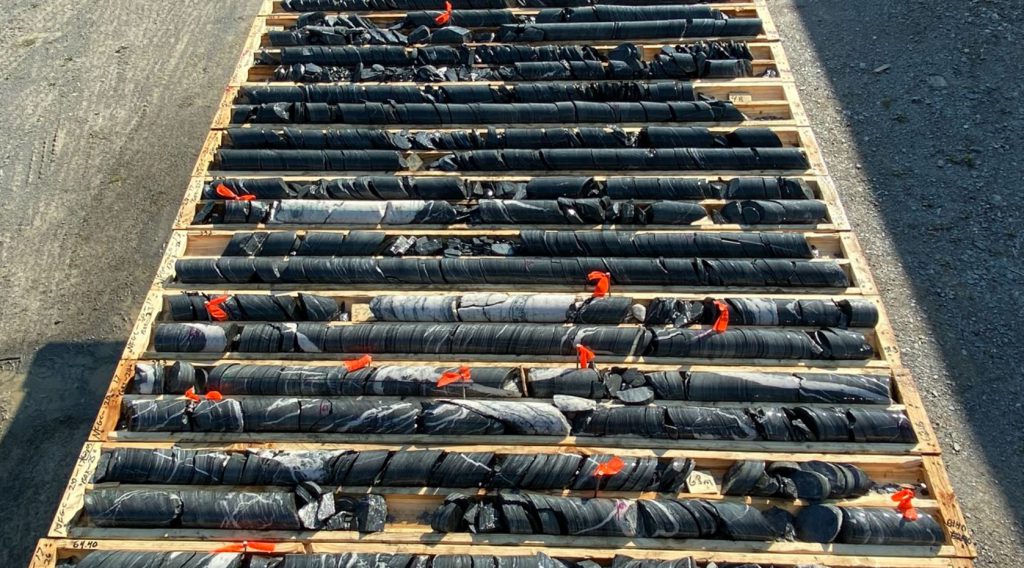New Found drills 46 metres of 24 g/t gold at Queensway, Newfoundland

New Found Gold Corp. [NFG-TSXV; NFGFF-OTC] reported partial assay results from intervals in five holes drilled at the Keats Zone at its Queensway Project in Newfoundland. These holes were drilled as part of the company’s continuing 200,000-metre diamond drill program at its 100%-owned Queensway Project located on the Trans-Canada Highway 15 km west of Gander.
The 46-metre interval averaging 24.0 g/t gold in hole NFGC-21-80 is the broadest high-grade drill intercept to date at Keats. Hole 20-52 intersected three separate high-grade intervals over 30.1 metres, including an interval of 31.5 g/t over 14.1 metres.
Importantly, multiple intervals of high-grade gold mineralization were also intercepted within the Keats footwall veins which lie between the Keats Baseline fault and the Appleton fault zone. NFGC-20-73 encountered a footwall vein at 191.5 metres down hole that returned 21.9 g/t gold over 2.50 metres, including a 0.65-metre interval displaying visible gold that assayed 83.4 g/t gold. NFGC 20-49 encountered a footwall vein at 178 metres down hole that returned 5.55 g/t gold over 4.95 metres, including an interval displaying visible gold that assayed 21.2 g/t gold over 1.0 metres.
NFGC-20-73 was terminated at 293.8etres with the final 1.35-metre interval returning 2.73 g/t gold. This hole is now being deepened to test the extent of this gold mineralization. Refer to company press release for complete assays.
Greg Matheson, chief operating officer, stated: “Holes 52 and 80 provide further confirmation of the impressive widths of high-grade, near-surface gold mineralization in the Keats Baseline fault. Drilling is now focused on stepping out to the north, south and to depth. Drilling to date at Keats has also encountered multiple veins in the footwall of the Keats Baseline fault, typically returning assays in the 0.5 to over 3.0 g/t range. The high-grade intervals recently encountered in this secondary veining is very encouraging. The initial high-grade discovery hole (92.9 g/t over 19 m in NFGC-19-01) in the Keats Baseline fault was drilled below veining that returned multigram assays and that occurred within much longer intervals (up to over 100 m) of halo gold mineralization. In addition to the high-grade assays reported, hole NFGC-20-73 returned a cumulative 125 m that assayed above 0.1 g/t, indicating a broad anomalous gold halo within the Keats Baseline footwall. We will continue to step out on these intervals to test for additional zones of high-grade gold mineralization between the Keats Baseline fault and the Appleton fault.”
